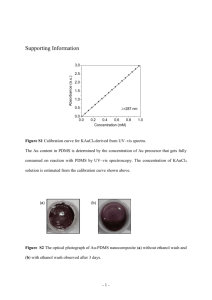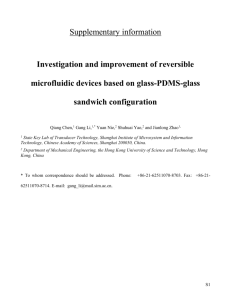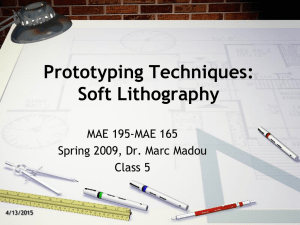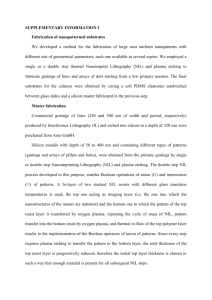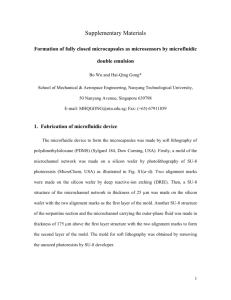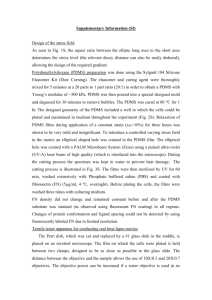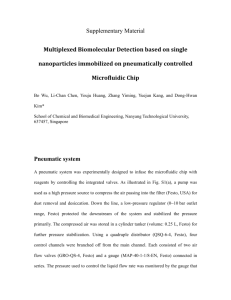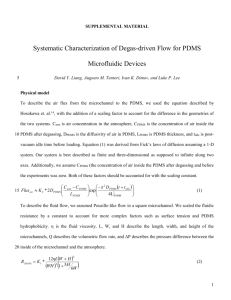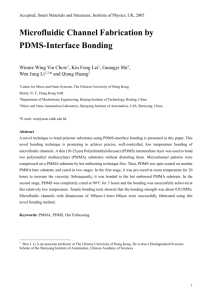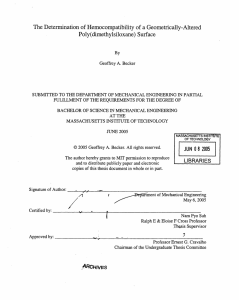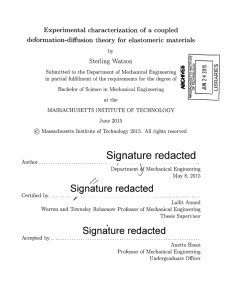Supplementary Information Kinetic behaviour of the cells touching
advertisement
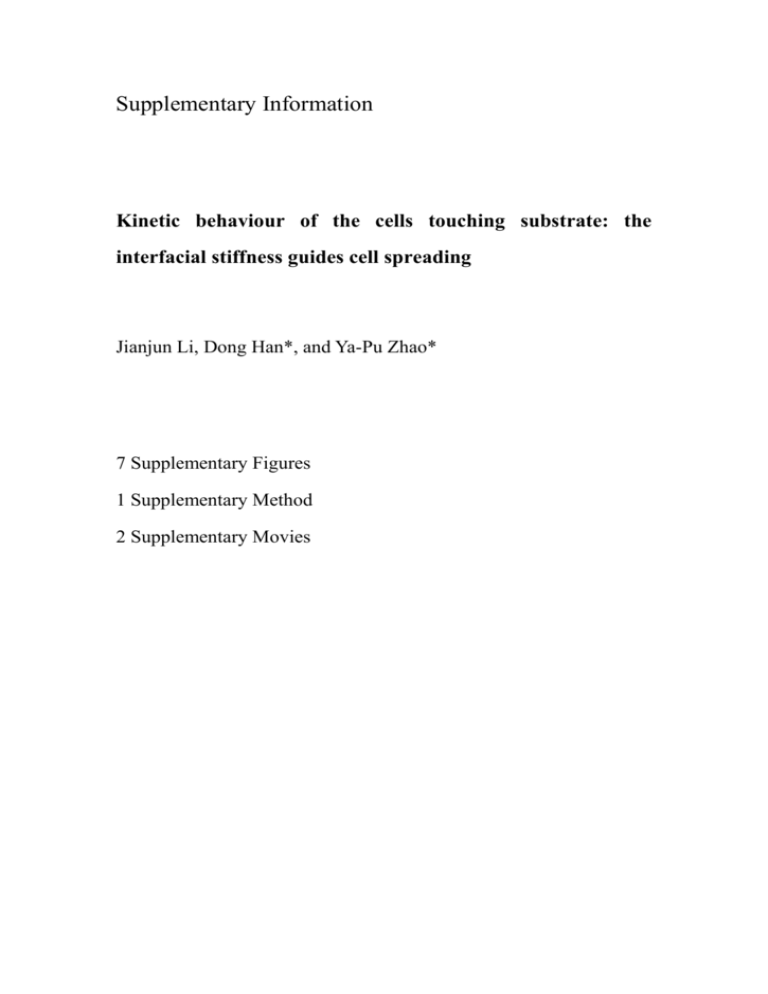
Supplementary Information Kinetic behaviour of the cells touching substrate: the interfacial stiffness guides cell spreading Jianjun Li, Dong Han*, and Ya-Pu Zhao* 7 Supplementary Figures 1 Supplementary Method 2 Supplementary Movies Supplementary Figures Here shows 3 evidences of the existence of surface layer on PDMS after UV treatment. 1. The non-specific adhesion reduced after the UV treatment, as shown in Fig. S1. The averaged work of adhesion between micro-sphere and PDMS (60:1) is 81.2±22.5 fJ. When it was exposed to UV, the generated surface layer (perhaps as well as hydroxyl) caused reduction to 25.4±18.1 fJ. Figure S1 Non-specific adhesion between micro-sphere and PDMS 2. The PDMS surface became more hydrophilic. The contact angle of water is reduced from 115.9° to 79.6° on PDMS (60:1), and the surface energy of PDMS increased based on Young equation. This indicated the existence of silica layer on PDMS. Figure S2 Contact angle of water on PDMS a) pre UV b) after UV 3. The indentation curves of PDMS (60:1) show obviously difference between pre UV and after UV. The PDMS after UV treatment has a bigger slope which means the surface is much stiffer. In another word, it also indicates the existence of the oxidizing layer. Figure S3 The indentation curves of PDMS Figure S4 AFM averaged curve and optimized FE curve on PDMS (80:1). For PDMS (80:1), the most optimized parameters of silica layer are 190 nm and 8 MPa, which is almost the same to PDMS (60:1). To reduce the difficulty of modeling in FEM, we regarded it as the same. Figure S5 The rigidity range that cells show different spreading behaviors on substrates of PAAm has an upper limit of 33 kPa. (a) Time lapse recording of cell spreading on different substrates. The extensions of lamellipodia or filopodia on substrate of 33 kPa and 100 kPa, which are different from those on less stiff substrates, are nearly the same. (b) The projected areas of cells after 20 min seeding increase with the elasticity. ** p < 0.01 vs. projected areas on soft substrate by one-way ANOVA analysis . The projected areas of cells on substrates of 2.3 kPa, 33 kPa and 100 kPa show no significant difference. (c) Cells on stiffer substrate spread much faster than those on soft substrate, while the scaling law factors on substrates of 33 kPa and 100 kPa show no significant difference. ** p < 0.01. Scale bar: 10 μm. Figure S6 Inhomogeneous porous network of PAAm gels. Scale bar: (a) 100 μm, (b) 20 μm, (c) 2 μm. Figure S7 Normalized contact radius as a function of time. This result is in consistent with the typical data on PDMS in our experiment. Supplementary Method Scanning electron microscopy of PAAm hydrogels PAAm gels were attached to round coverslips with 10 mm in diameter, and fixed with 2.5% glutaraldehyde in 0.01 M PBS buffer overnight at room temperature. After washing with PBS three times, the substrates were treated with 1% osmium ferricyanide at 4C for 6-8 hours. After a further washing step with PBS, the samples were dehydrated in an ascending series of ethanol solutions from 30 to 100%. The coverslips were placed in a critical point dryer (CPD 030, Bal-Tec), where the ethanol was replaced with liquid CO2, which was heated to 40C and changed its state to gaseous phase. The coverslips with samples were glued to pin stub specimen holder with colloidal silver before observation. Samples were viewed by environment scanning electron microscopy (Quanta 200, FEI) in low vacuum mode at 6 kV. In order to maintain the original appearance of the samples, no metallic conductive layer was coated on the surface. To further confirm the network of hydrogels, bulk hydrogel samples were quench-frozen, by plunging into liquid nitrogen. Then the samples were treated in the above way. Supplementary Movies Supplementary Movies S1: Cell spreading on different substrates of PAAm. Supplementary Movies S2: Cell spreading on different substrates of PDMS.
